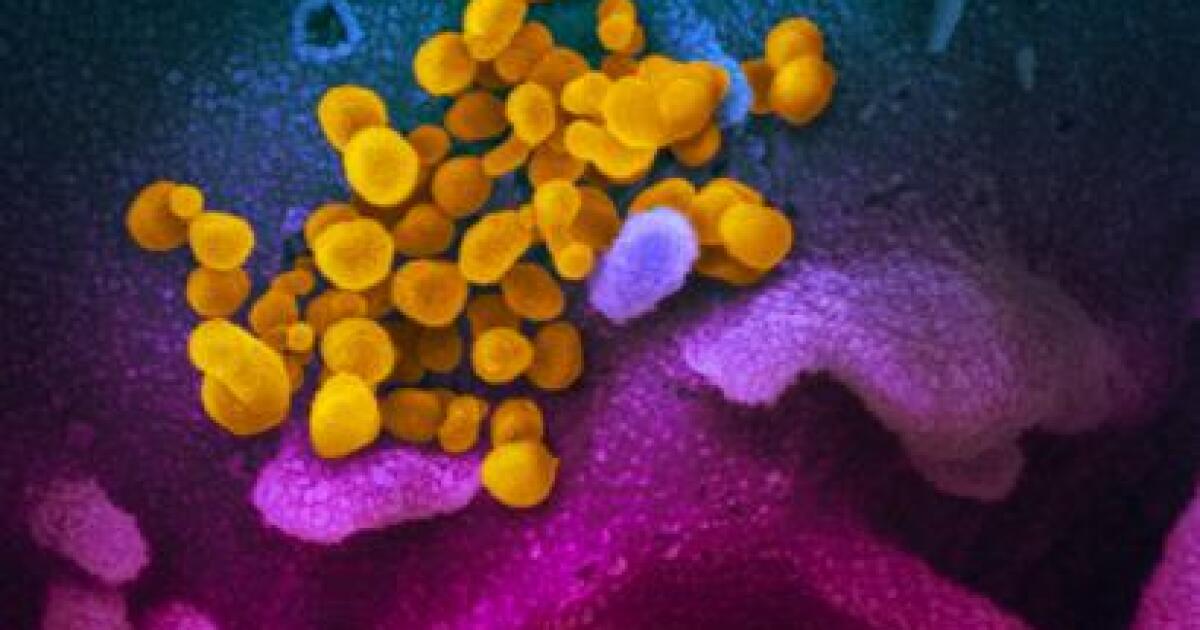
First, the mother and nanny were hospitalized with pneumonia, suspected of being infected with the novel coronavirus. The next day, the father fell ill with a fever and sore throat and was hospitalized too.
With no one to care for him, the baby was brought to the hospital to be cared for in an isolation unit. The child — a 6-month-old boy — came to the hospital with no symptoms of COVID-19. He seemed perfectly healthy, was breathing fine and had no fever on his arrival at the hospital, medical professionals observed.
But a closer examination produced a surprise: Huge amounts of the novel coronavirus were detected in the baby. The virus was found in his throat, blood and stool. Pathogens continued to be detected in the boy for the first 16 days he was at the hospital. But he never showed symptoms of the illness, apart from a single temperature reading of 101.3 degrees that fell back to normal within an hour.
Advertisement
In this case from Singapore — reported in a study published in the journal Clinical Infectious Diseases — the mother had not traveled, but her job put her in close contact with tourists from China, the epicenter of the outbreak.
The findings are critical for public health officials to understand, researchers say.
“While most adults with COVID-19 infection have fever, respiratory symptoms and/or chest X-ray changes, current data suggest that the majority of the infected children have mild or no symptoms,” wrote the authors, experts with the KK Women’s and Children’s Hospital and the National Centre for Infectious Disease in Singapore.
Dr. Otto Yang, an infectious diseases expert at UCLA who wasn’t a part of the study, said the findings have “important implications.” The results show how children can “have minimal symptoms or no symptoms, but are infectious,” he said.
Advertisement
“In general, the younger you are, the less severe your symptoms are. But that’s not because you don’t get infected. It’s because the infection doesn’t cause you to get sick,” Yang said. Nonetheless, “you probably still remain very infectious.”
Other studies back up the idea that babies, toddlers and young children are either not falling ill, or not getting very sick, from the virus, which has sickened more than 97,000 globally and killed more than 3,000.
A sweeping review of 44,672 lab-confirmed COVID-19 patients in China by Chinese authorities found that no deaths occurred among anyone younger than 10.
Another study by experts in Wuhan, China, published in the Journal of the American Medical Assn., sought to review all hospitalized infants diagnosed with COVID-19 infection between Dec. 8 and Feb. 6 in China.
By Feb. 6, there had been 31,211 confirmed cases of COVID-19 and 637 fatalities. But the authors could find only nine infected babies who were hospitalized nationwide.
“None of the nine infants required intensive care or mechanical ventilation or had any severe complications,” the study said.
Four had fever, two had mild upper respiratory tract symptoms and one had no symptoms but tested positive for the virus because of the baby’s exposure to infected family. There were no symptoms available for the other two patients.
Advertisement
And a report published in the World Journal of Pediatrics, summarizing experts’ consensus on the coronavirus in children, also warned that people who have a “silent infection” are among the main sources of transmission for the illness.
“We also should attach importance to asymptomatic cases, which may play a critical role in the transmission process,” the report said. “Respiratory droplets and contact are the main transmission routes. Close contact with symptomatic cases and asymptomatic cases with silent infection are the main transmission routes of [novel coronavirus] infection in children.”
However, the director-general of the World Health Organization has pushed back on the idea that the coronavirus can infect people as easily as the flu. Tedros Adhanom Ghebreyesus said Tuesday that although a person with influenza can be contagious when an infected person does not have symptoms, the same does not appear to be true for the coronavirus.
Most infected children have no fever or symptoms of pneumonia, and few progress to infections of the lung, the report said. Infected children may either show no signs of illness, or have fever, dry cough and fatigue; few have upper-respiratory symptoms such as a runny nose or nasal congestion, and some report a stomach ache, nausea, vomiting and diarrhea.
One possible reason why babies, toddlers and young children have not been critically threatened by the new coronavirus is their immature immune system. An undeveloped immune system might prevent the body from triggering inflammation severe enough to result in pneumonia, septic shock or organ failure, said Yang, the infectious diseases specialist at UCLA.
While the new coronavirus can cause mild or no illness in the very young, the risk is much higher in those over the age of 70. Underlying medical conditions are also a risk factor for complications, such as diabetes, obesity, disease of the heart, lung or kidney and those with weakened immune systems, according to Dr. Anthony Fauci, director of the National Institute of Allergy and Infectious Diseases.
Most people who become infected with COVID-19 show only mild symptoms; the review of 44,672 lab-confirmed patients showed 81% with mild symptoms. Researchers found 14% had severe illnesses and 5% were critical, half of whom died.
Times staff writer Deborah Netburn contributed to this report.
"how" - Google News
March 06, 2020 at 05:59AM
https://ift.tt/3cyHSrB
How a healthy-looking baby might spread the coronavirus - Los Angeles Times
"how" - Google News
https://ift.tt/2MfXd3I
Bagikan Berita Ini















0 Response to "How a healthy-looking baby might spread the coronavirus - Los Angeles Times"
Post a Comment